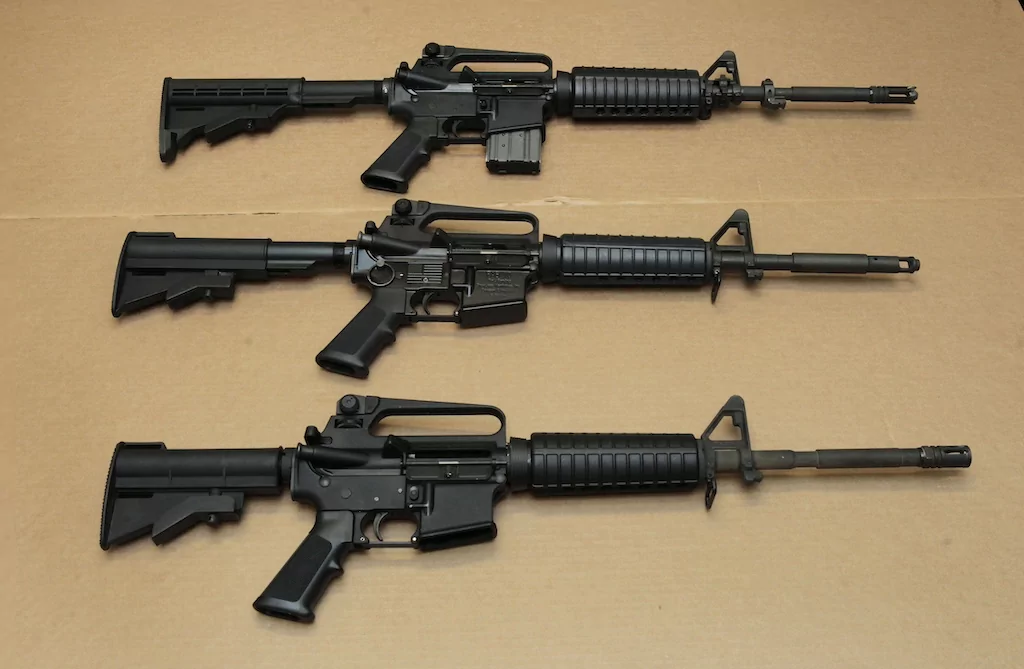Federal courts across the country are handing back disparate rulings over federal and state gun laws despite nearly back-to-back Second Amendment cases at the Supreme Court that sought to clarify the scope of the right to bear arms.
Although the Supreme Court’s landmark 2022 decision in New York State Rifle & Pistol Association, Inc. v. Bruen held that gun regulations must align with the nation’s “history and tradition” of firearms laws and a separate case this summer called Rahimi v. U.S. upheld firearm prohibitions for domestic violence offenders, lower federal courts are still struggling to achieve consistency, as shown by three major decisions last week alone.

First, a federal judge in Kansas appointed by former President Donald Trump caught national attention on Aug. 21 after he dismissed a case for a defendant facing felony charges for possessing a machinegun. Later in the week, two federal appeals courts swung the opposite direction to uphold other restrictions on firearms, with one decision upholding bans on felons possessing guns and a separate appellate court agreeing to uphold a Maryland handgun licensing law.
Andrew Willinger, executive director of the Center for Firearms Law at Duke Law School, told the Washington Examiner the pattern of divergent Second Amendment rulings does not come as a surprise.
“It does not seem like Rahimi has clarified a whole lot,” Willinger said.
Willinger said the lack of congruence among lower courts could be due in part to the infancy of the Rahimi precedent, which was decided on June 21, noting some courts are still digesting its meaning and the extent that it affected the history and tradition test set in Bruen.
“We’ve seen as well that these decisions were drafted, or at least they were early-stage drafts, before Rahimi, and then the judges kind of went back and maybe added or rewrote portions or what have you. But I think we’re seeing, as you might expect, judges kind of grasping on to different pieces of Rahimi,” Willinger added.
U.S. District Judge John W. Broomes, the author of the machine-gun decision in Kansas, wrote that the government had not “met its burden under Bruen and Rahimi to demonstrate through historical analogs that regulation of the weapons at issue in this case are consistent with the nation’s history of firearms regulation.” He ruled the federal ban was unconstitutional as applied to one criminal defendant, which leaves the federal machinegun ban in place.
Jacob Charles, an associate law professor at Pepperdine University who tracks Second Amendment cases, said the Kansas ruling is a direct fallout from the Bruen decision.
“It gives lower court judges the ability to pick and choose the historical record in a way that they think the Second Amendment should be read,” Charles said.
Although the judge’s ruling faced pushback from gun control groups, firearms law experts such as Charles suggested the ruling may not hold up on appeal for various reasons, notwithstanding the fact that the government could appeal to the liberal-leaning U.S. Court of Appeals for the 9th Circuit.
Willinger agreed, noting, “I don’t see it having much of an impact in terms of other courts adopting that same view.”
Before Bruen, the last time the high court issued a significant Second Amendment decision was the 2010 McDonald v. City of Chicago ruling that found the right to bear arms applied to the states, constraining the extent local governments can regulate firearms. Before that, it was the landmark Heller v. D.C. case in 2007.
But the bulk of Second Amendment activist gripes in recent years have largely surrounded two laws, the 1934 National Firearms Act (NFA) and the 1986 Firearms Owners Protection Act, which both functionally banned civilians from owning automatic weapons.
Pro-gun control groups such as the Constitutional Accountability Center were inflamed this summer after the Supreme Court found the Bureau of Alcohol, Tobacco, Firearms and Explosives ban on bump stocks to be unconstitutional in a case known as Garland v. Cargill, arguing the high court “rejected Congress’s definition of the term ‘machinegun.’”
Notably, constitutional Second Amendment lawsuits are vastly different areas of law from ATF rule challenges, which are more closely tied to matters of administrative law. However, the steady rise of Second Amendment disputes and contests against ATF rules at the Supreme Court come at a time when the justices have taken a sharper aim at executive agency powers. For example, the overturning this year of the 1984 Chevron deference puts pressure on agencies to show their rules are covered under statutes passed by Congress.
Willinger noted that Broomes’s “decision doesn’t mention Cargill at all, but actually reading it sort of makes me wonder whether there’s some influence that that the decision in Cargill is having in terms of other aspects of the National Firearms Act.”
The Duke Law expert said he believes it is entirely plausible for the Supreme Court to wade back into another constitutional Second Amendment fight sooner than later, noting the prominence of challenges to state “assault weapons” bans, such as one in Maryland, could require more clarity from the highest court.
The Supreme Court recently dodged weighing in on an AR-15-style gun and large-capacity magazines ban out of Illinois in July, largely because the case was underdeveloped in lower court proceedings. But Willinger said a similar ban in Maryland, which has been upheld at the 4th Circuit after a 10-5 ruling on the merits, could be open to high court review at some point given that pro-gun activists have sought review by the justices.
CLICK HERE TO READ MORE FROM THE WASHINGTON EXAMINER
Nevertheless, the Supreme Court is poised to once again wade into an ATF dispute this fall over a federal “Frame or Receiver” rule, which expanded the definition of a “firearm” to include weapon parts kits that can be assembled into functional firearms, as well as partially complete or disassembled frames or receivers. The rule has been rebuked by pro-gun activists as a measure that hamstrings firearms manufacturers.
The nine justices will hear arguments in that case, Garland v. VanDerStok, on Oct. 8, one of the first arguments they will hear when their new term begins this fall.
























